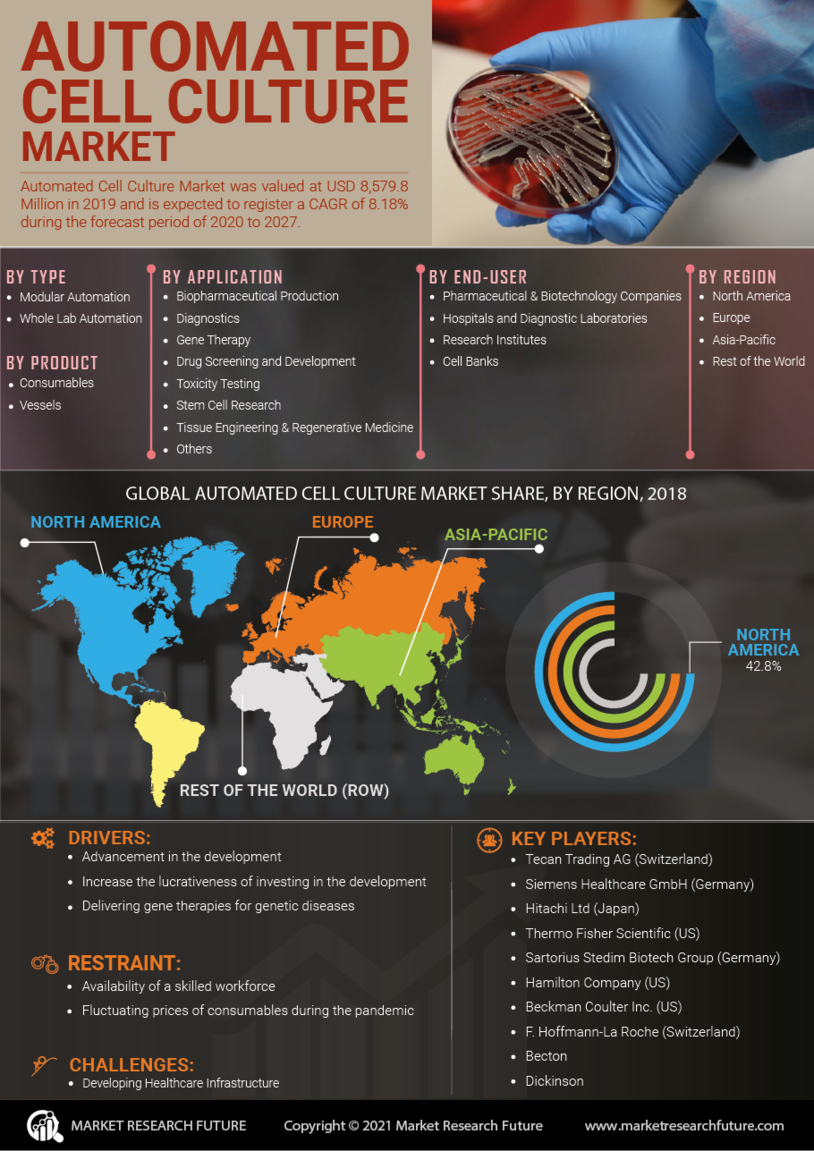Automated Cell Culture Market Overview
Automated Cell Culture Market Size was valued at USD 4.89 Billion in 2023. The Global Automated Cell Culture industry is projected to grow from USD 5.22 Billion in 2024 to USD 9.96 Billion by 2032, exhibiting a compound annual growth rate (CAGR) of 7.45% during the forecast period (2024 - 2032).
The market growth of the automated cell culture, increasing focus on cell-based assays, and the high demand for high-throughput screening in drug discovery are also contributing factors to the market growth. The growing demand for personalized medicine and the development of regenerative medicine are also driving the market's expansion. The increasing use of cell cultures in the study of various diseases and the production of biological drugs, such as vaccines and therapeutic proteins, is also expected to drive the market in the future.
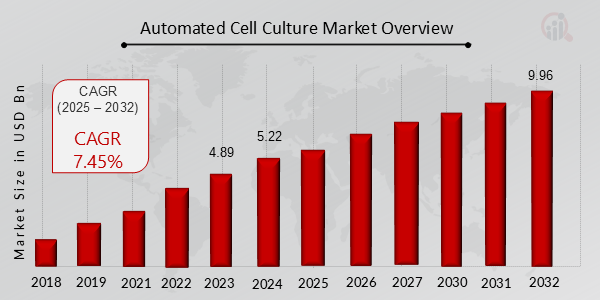 Source: Secondary Research, Primary Research, MRFR Database, and Analyst Review
May 2024
Source: Secondary Research, Primary Research, MRFR Database, and Analyst Review
May 2024
ProPharma, a regulatory, clinical, and compliance services provider for the life sciences industry headquartered in the United States and a portfolio company of Odyssey Investment Partners, has introduced the Cell Factory Box (CF Box), an enclosed, fully automated cell factory device, in collaboration with PBL, an Italy-based custom solutions provider for the pharmaceutical, chemical, and diagnostics industries. A press release dated 2 May 2024 states that this apparatus permits the decentralized production of all forms of cell and gene therapies (CGTs) in controlled non-classified areas (CNVs) or Class D (ISO8) environments.
"Many are adopting a decentralized approach to manufacturing [CGTs] with regard to treatment options," said Eleonora Casucci, vice-president of Quality & Compliance EU at ProPharma, in a press release. The CF Box offers significant benefits in comparison to the presently available devices. Our alliance with PBL enables us to provide comprehensive service to individuals in the [CGT] segment.
As per the announcement, the CF Box is highly automated and employs artificial intelligence (AI) technology that has been previously approved, thereby reducing manual operation by a substantial margin. Furthermore, the device's characteristics diminish the necessity for opulently spotless chambers. The CF Box utilizes batch manufacturing and approved AI technology for batch detection recognition, which is suspended during validation. Users are able to select modules and the products/technologies they desire in accordance with their specific requirements. Further modules may be incorporated at a later time.
The press release states, "Robotic arms, cameras, liquid transfer systems, conveyor belts, components, and tools are commercially available and enable complete automation, including but not limited to notifying the operator when the culture reaches the desired values." The configuration enables adaptability in the automation of manual procedures and facilitates a wide range of manufacturing duties. According to the release, the CF Box is also programmable for a variety of processes, including streamlined manufacturing timelines and optimized cell culture expansion.
Automated Cell Culture Market Trends
- Rising Expenditure on Research and Development to Boost Market Growth
The increasing demand for
stem cell therapy and the growth of the biopharmaceutical sector is expected to drive the market for automated cell culture systems. The rising geriatric population, which is more prone to non-communicable diseases, contributes to the automated cell culture market growth. The WHO predicts that the number of people aged 60 and older will reach 2.1 billion by 2050, further fueling the market's growth of automated cell culture. Additionally, technological advancements in complex bioreactors and spheroids have further encouraged the market growth of the automated cell culture.
Moreover, the increasing demand for personalized medicine, where cell culture systems play a crucial role in drug development, is also driving the market CAGR. The advancements in technology, like automation and miniaturization, are contributing to the increasing popularity of automated cell culture systems.
In addition, advancements in technology, such as the integration of AI and machine learning and the development of compact and portable automated cell culture systems, are also driving automated cell culture market revenue.
Figure 1: Automated Cell Culture growth over the years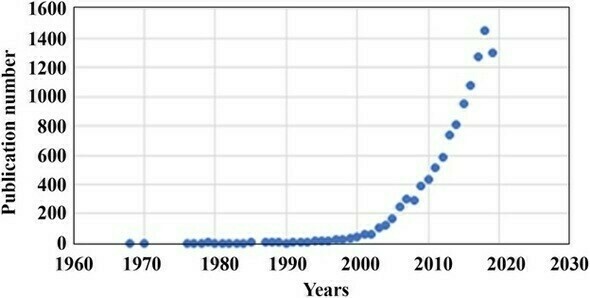 Source: Secondary Research, Primary Research, MRFR Database and Analyst Review
Source: Secondary Research, Primary Research, MRFR Database and Analyst Review
Automated Cell Culture Market Segment Insights
Automated Cell Culture Product Type Insights
The market segments of automated
cell culture, based on type, includes whole label automation and modular automation. The modular automation segment held the majority share in 2022 contributing to around ~75% respect to the market revenue of automated cell culture. The modular automation system provides flexibility, scalability, and cost-effectiveness, which makes it a popular choice among researchers and scientists. The use of modular automation systems helps in reducing manual errors and streamlines laboratory operations, increasing the efficiency and productivity of the research process. The growth in the demand for modular automation systems is likely to continue in the coming years as more researchers adopt this technology to meet the growing demand for automated cell culture solutions.
Automated Cell Culture Product Insights
The automated cell culture market segmentation, based on product, includes vessels and consumables. The consumables segment dominated the market in 2022 and is projected to be the faster-growing segment during the forecast period, 2024-2032. The consumables segment of the market is growing due to an increase in research in the fields of stem cells and oncology, which require high consumption of consumables. The rise in the number of life science research activities and the increasing demand for in-vitro testing will also contribute to the growth of the segment.
Automated Cell Culture Application Insights
The market segmentation for automated cell culture, based on application, includes diagnostics, biopharmaceutical production, toxicity testing, drug screening & development,
tissue engineering & regenerative medicine, and stem cell research. The biopharmaceutical production segment dominated the market in 2022 and is projected to be the faster-growing segment during the forecast period, 2024-2032. This increased focus on drug development has led to a surge in demand for automated cell culture systems, which are crucial in the production of biological drugs, vaccines, and other treatments. The ability of automated cell culture systems to improve the speed, accuracy, and consistency of cell-based assays has made them essential in the development of new treatments.
Automated Cell Culture End-User Insights
The automated cell culture market data has been bifurcated by end users into hospitals & diagnostic laboratories, pharmaceutical & biotechnology companies, cell banks, and research institutes. The pharmaceutical & biotechnology companies segment dominated the market in 2022 and is projected to be the faster-growing segment during the forecast period, 2024-2032.
Figure 2: Automated Cell Culture Market, by End-User, 2022 & 2032 (USD billion)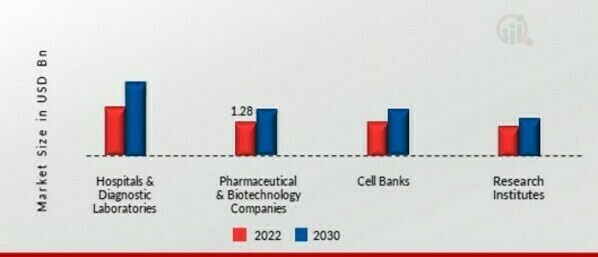 Source: Secondary Research, Primary Research, MRFR Database, and Analyst Review
Source: Secondary Research, Primary Research, MRFR Database, and Analyst Review
The rapid growth of this segment can be contributed to the increasing investment in R&D by pharmaceutical and biotechnology companies to develop novel automated cell culture systems and products. The presence of numerous pharmaceutical manufacturers in this market is also contributing to the growth of the market.
The use of automated cell culture systems helps biopharmaceutical companies in achieving higher production yield, reduce production time and cost, and improve the quality of the final product. The trend of outsourcing drug production to CMOs/CDMOs is expected to continue in the future, further boosting the demand for automated cell culture systems.
Automated Cell Culture Regional Insights
By Region, the study provides market insights into North America, Europe, Asia-Pacific, and the Rest of the World. The North American automated cell culture market accounted for USD 2.1 billion in 2022 and is expected to exhibit a significant CAGR growth during the study period. North America is expected to be a significant contributor to the market of automated cell culture, with the US being a major contributor.
North America's dominance in the market due to the region's advanced healthcare infrastructure, which supports research and development activities, as well as the high number of bone marrow and cord blood transplants performed. The rising awareness of the use of stem cells as therapies, as well as the increasing number of pharmaceutical companies and manufacturers in the region, are also contributing to the growth of the market. Further, the major countries studied in the market report are The U.S., Canada, Germany, France, the UK, Italy, Spain, China, Japan, India, Australia, South Korea, and Brazil.
Figure 3: Automated Cell Culture Market Share By Region 2022 (%)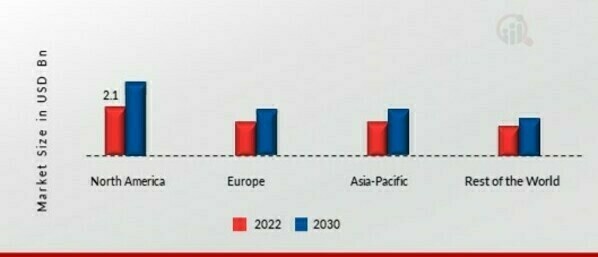 Source: Secondary Research, Primary Research, MRFR Database, and Analyst Review
Source: Secondary Research, Primary Research, MRFR Database, and Analyst Review
The Asia Pacific market of automated cell culture is the fastest-growing due to government and private companies' increasing investment in the biotechnology sector, particularly in China, India, and Japan. The rapid growth of patients with chronic diseases, particularly cancer, and ongoing R&D activities for cancer treatment is expected to drive market of automated cell culture growth. Further, the China market of automated cell culture held the largest market share, and the India market of automated cell culture was the fastest-growing market in the region.
European automated cell culture market is growing due to strong government support for R&D and increased use of smart and connected devices, which drive the adoption of big data solutions to reduce clinical errors. The rise of digitization is also pushing healthcare companies to implement big data solutions would drive the market of automated cell culture. Moreover, UK market of automated cell culture held the largest market share, and the Germany market of automated cell culture was the fastest-growing market in the region.
Automated Cell Culture Key Market Players & Competitive Insights
Major cell culture companies are spending a lot of money on R&D to increase their product lines, which will help the market growth of automated cell culture even more. Market participants are also taking a range of strategic initiatives to grow their worldwide footprint, with key market developments such as new product launches, contractual agreements, mergers and acquisitions, increased investments, and collaboration with other organizations. Competitors in the automated cell culture industry must offer cost-effective items to expand and survive in an increasingly competitive and rising market environment.
One of the primary business strategies adopted by manufacturers in the automated cell culture industry to benefit clients and expand the market sector is to manufacture locally to reduce operating costs. In recent years, the automated cell culture industry has provided medicine with some of the most significant benefits. The automated cell culture market major player such as Beckman Coulter Inc. (US), Thermo Fisher Scientific (US), Hamilton Company (US), Sartorius Stedim Biotech Group (Germany), and others are working to expand the market demand by investing in research and development activities.
Beckman Coulter develops, manufactures, and markets products related to biomedical testing. It has been operating for over 80 years and has a presence, serving healthcare professionals, pharmaceutical and biotech companies, universities, medical schools, and research institutions. A few years back Beckman Coulter was acquired by Danaher Corporation, after which the company is headquartered in Brea, California, and had over 12,000 employees with $5.8 billion in sales by 2017.
Sartorius Stedim Biotech is a company that helps its customers in the biopharmaceutical industry to streamline production processes and manufacture biotech drugs and vaccines. It has 25+ subsidiaries and 11,900 employees worldwide. In 2022, Sartorius Stedim Biotech experienced growth in its sales revenue, with a 17% increase in constant currencies and a 23.4% increase when reported in euros. The total sales revenue was recorded at 2,603 million euros.
Key Companies in the Automated Cell Culture market include
-
Tecan Trading AG - Siemens Healthcare GmbH
- F. Hoffmann-La Roche
-
Hitachi Ltd - Beckman Coulter Inc.
- Thermo Fisher Scientific
- Hamilton Company
- Sartorius Stedim Biotech Group
- Becton
- Dickinson
Automated Cell Culture Industry Developments
August 2021 Advanced Instruments, a top producer of analytical instruments and services for bioprocessing, acquired Solentim, a provider of solutions for isolating and characterizing high-value single-cell clones in cell line development.
In July 2021 BD launched a new digital marketplace, bdbiosciences.com, for flow cytometry. The website offers improved online purchasing for flow cytometry users and procurement teams.
Automated Cell Culture Market Segmentation
Automated Cell Culture Type Outlook (USD Billion, 2018-2032)
- Whole Label Automation
- Modular Automation
Automated Cell Culture Product Outlook (USD Billion, 2018-2032)
Automated Cell Culture Application Outlook (USD Billion, 2018-2032)
- Diagnostic
- Biopharmaceuticals production
- Toxicity Test
- Drug Screening and Development
- Tissue Engineering and Regenerative Medicine
- Stem Cell Research
Automated Cell Culture End User Outlook (USD Billion, 2018-2032)
- Hospital and Diagnostic Laboratories
- Pharmaceuticals and Biotechnology Companies
- Cell Banks
- Research Institutes
Automated Cell Culture Regional Outlook
- North America
-
Europe
- Germany
- France
- UK
- Italy
- Spain
- Rest of Europe
-
Asia-Pacific
- China
- Japan
- India
- Australia
- South Korea
- Australia
- Rest of Asia-Pacific
-
Rest of the World
- Middle East
- Africa
- Latin America
| Attribute/Metric |
Details |
| Market Size 2023 |
USD 4.89 billion |
| Market Size 2024 |
USD 5.22 billion |
| Market Size 2032 |
USD 9.96 billion |
| Compound Annual Growth Rate (CAGR) |
7.45% (2024-2032) |
| Base Year |
2023 |
| Market Forecast Period |
2024-2032 |
| Historical Data |
2018 & 2022 |
| Market Forecast Units |
Value (USD Billion) |
| Report Coverage |
Revenue Forecast, Market Competitive Landscape, Growth Factors, and Trends |
| Segments Covered |
Type, Product, Application, End-user, and Region |
| Geographies Covered |
North America, Europe, Asia Pacific, and the Rest of the World |
| Countries Covered |
The U.S, Canada, Germany, France, the UK, Italy, Spain, China, Japan, India, Australia, South Korea, and Brazil |
| Key Companies Profiled |
Hitachi Ltd (Japan), Beckman Coulter Inc. (US), Thermo Fisher Scientific (US), Hamilton Company (US), Sartorius Stedim Biotech Group (Germany) |
| Key Market Opportunities |
Development and Maintenance of Expertise. |
| Key Market Dynamics |
New Product Launches and Technology Developments How much is the Automated Cell Culture market? |
Automated Cell Culture Market Highlights:
Frequently Asked Questions (FAQ) :
The Automated Cell Culture market size was valued at USD 4.89 Billion in 2023.
The market is projected to grow at a CAGR of 7.45% during the forecast period, 2024-2032.
North America had the largest share of the market
The key players in the market are Beckman Coulter Inc. (US), Thermo Fisher Scientific (US), Hamilton Company (US), and Sartorius Stedim Biotech Group (Germany).
The modular Automated Cell Culture category dominated the market in 2022.
Pharmaceutical & biotechnology companies had the largest share of the market.










